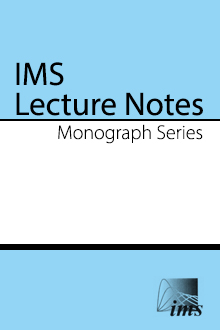Abstract
For a marked point process $\{(x_i, S_i)_{i \geq 1}\}$ with $\{x_i \in \Lambda: i \geq 1\}$ being a point process on $\Lambda \subseteq \mathbb R^d$ and $\{S_i \subseteq R^d: i \geq 1\}$ being random sets consider the region $C= \cup_{i \geq 1} (x_i + S_i)$. This is the {\it covered}\/ region obtained from the Boolean model$\{(x_i + S_i): i \geq 1\}$. The Boolean model is said to be {\it completely covered}\/ if $\Lambda \subseteq C$ almost surely. If $\Lambda$ is an infinite set such that ${\bf s} + \Lambda \subseteq \Lambda$ for all ${\bf s} \in \Lambda$ (e.g. the orthant), then the Boolean model is said to be {\it eventually covered}\/ if ${\bf t} + \Lambda \subseteq C$ for some ${\bf t}$ almost surely. We discuss the issues of coverage when $\Lambda$ is $\mathbb R^d$ and when $\Lambda$ is $[0,\infty)^d$.
Information
Digital Object Identifier: 10.1214/074921706000000158


